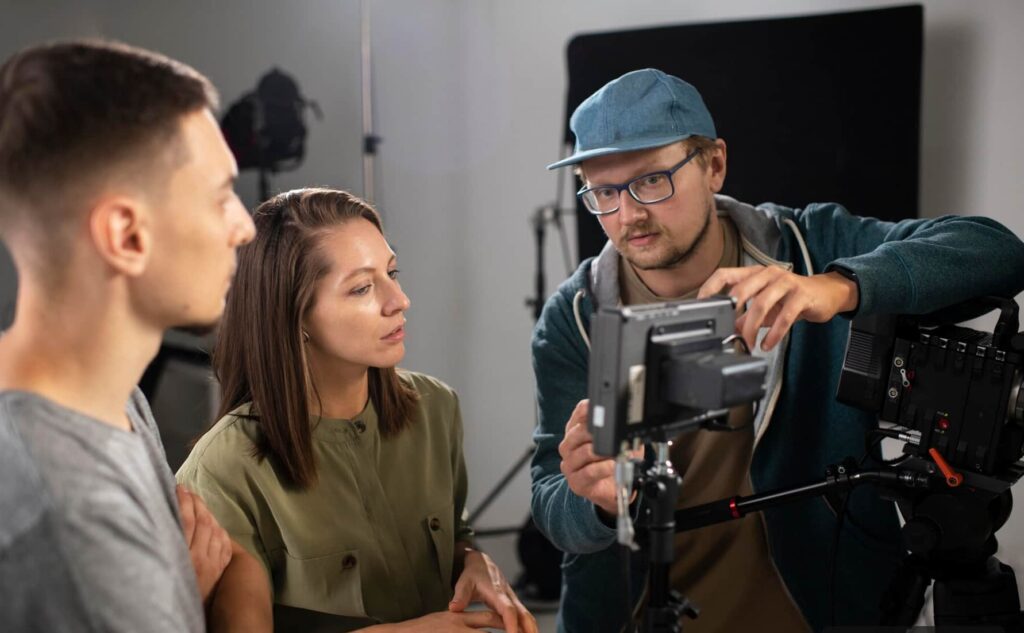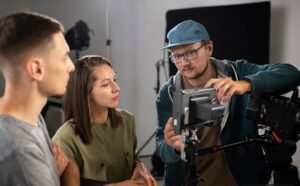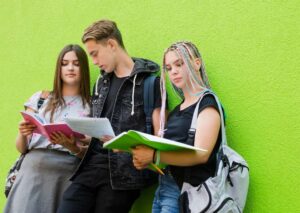When I first started figuring out my project, I was amazed by the sheer number of film ia ideas and film ia topics out there. I spent a bunch of time scrolling through different posts and forums, scribbling down a mix of ib film ia ideas that caught my eye and really made me think about what I wanted to analyze. I kept coming across a lot of film ia questions that made me go, “Hmm, this might be the angle I need to try out.”
I even discovered some cool ia ideas film that were super accessible—like easy film ia ideas that didn’t overwhelm me right away but still left plenty of room for creativity. I checked out some ib film ia topics and even a few ib film ia examples that helped me see how others connected film theory with actual scenes and narratives.
Some of the film ia research questions I found were pretty challenging but in a good way, pushing me to add a little extra depth to my project. I even mixed in a couple of hl film ia ideas that inspired me to look at films from a fresh perspective.
What I learned is that blending different types of ideas—from straightforward ones to more complex options—can really help you set up a project that not only shows off your skills but also feels totally doable.
IB Film Analysis Project Ideas with RQs
I’m here to share what worked for me so you can feel more confident when choosing your own film atalysis project topics and research questions.
All these topics align with IB Film IA criteria, focusing on film theory, cinematographic techniques, cultural/historical context, and narrative structure.
1. The Role of Cinematography in Psychological Thrillers
- RQ1: How does cinematography create suspense and tension in Black Swan (2010)?
Overview: Analyze camera movement, lighting, and framing to explore how the film manipulates audience perception. - RQ2: To what extent does The Shining (1980) use Steadicam shots to enhance psychological horror?
Overview: Investigate how long takes and smooth tracking shots contribute to an eerie, unsettling atmosphere. - RQ3: How does the use of color in Se7en (1995) enhance its psychological thriller elements?
Overview: Examine color grading choices and their emotional/psychological effects on viewers.
2. Sound Design in Science Fiction Films
- RQ1: How does sound design contribute to the world-building in Blade Runner 2049 (2017)?
Overview: Discuss how futuristic sounds and ambient noise create immersion. - RQ2: To what extent does silence play a role in tension-building in A Quiet Place (2018)?
Overview: Analyze how sound (or lack thereof) drives the narrative and suspense. - RQ3: How does Interstellar (2014) use sound mixing and score to heighten emotional impact?
Overview: Explore the balance between dialogue, score, and sound effects in conveying emotions.
3. The Influence of German Expressionism in Modern Cinema
- RQ1: How do the shadow and lighting techniques of Nosferatu (1922) influence modern horror films?
Overview: Compare its visual style with contemporary horror films like The Babadook (2014). - RQ2: To what extent does Tim Burton’s Batman Returns (1992) reflect German Expressionist aesthetics?
Overview: Analyze how distorted set design and gothic elements contribute to the film’s style. - RQ3: How does The Cabinet of Dr. Caligari (1920) inspire modern surrealist films like The Lighthouse (2019)?
Overview: Examine dreamlike storytelling and unconventional cinematography.
4. The Evolution of Superhero Film Storytelling
- RQ1: How does The Dark Knight (2008) redefine the superhero genre through complex character development?
Overview: Discuss how the film’s narrative depth differentiates it from earlier superhero movies. - RQ2: To what extent does Logan (2017) deconstruct superhero tropes?
Overview: Analyze the film’s realistic tone and departure from traditional superhero formulas. - RQ3: How does the non-linear storytelling in Spider-Man: Into the Spider-Verse (2018) enhance its narrative?
Overview: Examine how different animation styles and multiple timelines contribute to character arcs.
5. The Impact of Editing on Action Sequences
- RQ1: How does Mad Max: Fury Road (2015) use fast-paced editing to create a sense of urgency?
Overview: Analyze how quick cuts and continuity editing enhance the action sequences. - RQ2: To what extent does the long take fight scene in Oldboy (2003) challenge conventional action editing?
Overview: Compare its use of a single-take tracking shot with traditional action editing. - RQ3: How does John Wick (2014) balance choreography and editing to maintain clarity in action scenes?
Overview: Discuss how editing techniques ensure fluidity and impact.
6. The Role of Mise-en-Scène in Horror Films
- RQ1: How does Hereditary (2018) use mise-en-scène to foreshadow key plot developments?
Overview: Explore how visual elements in the background enhance the psychological horror. - RQ2: To what extent does The Witch (2015) use historical accuracy in costume and setting to enhance horror?
Overview: Analyze how 1600s New England authenticity contributes to the film’s dread. - RQ3: How does Midsommar (2019) subvert traditional horror mise-en-scène by using bright, open spaces?
Overview: Discuss how Ari Aster challenges conventional horror through unconventional visual choices.
7. Female Representation in Contemporary Film
- RQ1: How does Little Women (2019) present a modern feminist interpretation of the classic novel?
Overview: Compare its portrayal of female independence with earlier adaptations. - RQ2: To what extent does Promising Young Woman (2020) deconstruct the revenge-thriller genre from a female perspective?
Overview: Examine how the protagonist subverts traditional anti-hero tropes. - RQ3: How does Wonder Woman (2017) break away from conventional representations of female superheroes?
Overview: Analyze its impact on gender roles in the superhero genre.
8. The Use of Symbolism in Arthouse Films
- RQ1: How does The Tree of Life (2011) use non-linear storytelling and symbolism to explore existential themes?
Overview: Analyze its abstract sequences and cosmic imagery. - RQ2: To what extent does Parasite (2019) use architectural symbolism to reflect class divisions?
Overview: Examine how vertical space (basement vs. upper floors) represents social hierarchy. - RQ3: How does The Lighthouse (2019) use recurring motifs and symbols to depict psychological descent?
Overview: Discuss the significance of light, birds, and isolation in reinforcing thematic content.
9. The Role of Cinematic Realism in War Films
- RQ1: How does Saving Private Ryan (1998) achieve realism through cinematography and sound design?
Overview: Analyze the handheld camera movements and immersive battle sequences. - RQ2: To what extent does Dunkirk (2017) manipulate time and perspective to create a realistic war experience?
Overview: Discuss how its non-linear narrative adds emotional impact. - RQ3: How does 1917 (2019) use the illusion of a single continuous take to immerse viewers?
Overview: Analyze the psychological effect of long takes on war storytelling.
10. The Influence of Film Noir on Modern Crime Thrillers
- RQ1: How does Blade Runner (1982) reinterpret classic film noir tropes within a sci-fi setting?
Overview: Compare lighting, character archetypes, and narrative themes. - RQ2: To what extent does Sin City (2005) use stylistic elements of film noir in a modern context?
Overview: Examine black-and-white cinematography and voice-over narration. - RQ3: How does Joker (2019) incorporate neo-noir aesthetics in its portrayal of urban decay?
Overview: Analyze how lighting and character framing contribute to its noir influences.
11. The Power of Non-Linear Storytelling
- RQ1: How does Pulp Fiction (1994) use a fragmented narrative to enhance character development?
Overview: Discuss how different storylines intersect and affect audience perception. - RQ2: To what extent does Memento (2000) use reverse chronology to reflect memory loss?
Overview: Analyze how editing techniques contribute to the protagonist’s unreliable perspective. - RQ3: How does Arrival (2016) use non-linear storytelling to enhance its central themes?
Overview: Explore the interplay between language, time perception, and narrative structure.
12. The Evolution of Animation Techniques
- RQ1: How did Toy Story (1995) revolutionize the animation industry with CGI?
Overview: Compare early CGI animation techniques with traditional hand-drawn animation. - RQ2: To what extent does Spider-Man: Into the Spider-Verse (2018) redefine animation aesthetics?
Overview: Discuss its blend of 2D, 3D, and comic book visual styles. - RQ3: How does WALL-E (2008) use silent film influences to convey emotion in an animated format?
Overview: Examine how visual storytelling replaces traditional dialogue.
13. The Use of Visual Effects in Sci-Fi Films
- RQ1: How do visual effects in Inception (2010) contribute to the portrayal of dreamscapes?
Overview: Analyze the blend of practical effects and CGI that creates surreal environments. - RQ2: To what extent do practical effects versus CGI affect the realism in Gravity (2013)?
Overview: Compare sequences using on-set effects with those relying on digital augmentation. - RQ3: How does Avatar (2009) use groundbreaking visual effects to immerse audiences in an alien world?
Overview: Examine the integration of motion capture and 3D rendering techniques in constructing the film’s world.
14. Cultural Representation in International Cinema
- RQ1: How does Slumdog Millionaire (2008) portray the socio-economic realities of India?
Overview: Analyze narrative elements and visual symbolism that reflect Indian culture and societal challenges. - RQ2: To what extent does Pan’s Labyrinth (2006) reflect Spanish cultural and historical narratives?
Overview: Explore the interplay of folklore, historical context, and visual imagery in the film. - RQ3: How are cultural stereotypes challenged in Parasite (2019)?
Overview: Examine character development and spatial dynamics that critique class and cultural divisions.
15. The Impact of Director’s Style on Narrative Structure
- RQ1: How does Quentin Tarantino’s style shape the non-linear narratives in his films?
Overview: Discuss signature editing techniques, dialogue, and narrative fragmentation across his filmography. - RQ2: To what extent does Wes Anderson’s visual style contribute to the quirky narrative tone in his films?
Overview: Analyze symmetry, color palettes, and framing choices that enhance storytelling. - RQ3: How does Christopher Nolan’s directorial approach influence the complexity of his narrative structures?
Overview: Examine how intricate plotting and thematic layering are reflected in his film techniques.
16. The Role of Genre in Shaping Audience Expectations
- RQ1: How does the horror genre in The Conjuring (2013) manipulate audience expectations through sound and editing?
Overview: Analyze the use of jump scares, pacing, and sound design in eliciting fear. - RQ2: To what extent does the romantic comedy genre in Crazy, Stupid, Love (2011) subvert traditional tropes?
Overview: Examine narrative conventions and character arcs that challenge genre expectations. - RQ3: How do genre conventions in film noir establish audience anticipation in Double Indemnity (1944)?
Overview: Investigate how mood, dialogue, and lighting set the stage for suspenseful storytelling.
17. The Evolution of Documentary Filmmaking Techniques
- RQ1: How does Citizenfour (2014) use verité techniques to enhance its narrative authenticity?
Overview: Analyze handheld camera work, real-time interviews, and on-location sound that lend immediacy to the documentary. - RQ2: To what extent do narrative structures in documentaries like Won’t You Be My Neighbor? (2018) shape audience perceptions of reality?
Overview: Explore how editing and storytelling choices influence viewer engagement and interpretation. - RQ3: How have advancements in digital technology influenced the production and distribution of contemporary documentaries?
Overview: Discuss the role of digital cameras, online platforms, and social media in democratizing documentary filmmaking.
18. The Intersection of Technology and Storytelling in Animated Films
- RQ1: How does the integration of motion capture technology in The Adventures of Tintin (2011) enhance narrative realism?
Overview: Analyze how digital effects merge with traditional animation to create lifelike characters and environments. - RQ2: To what extent does digital animation contribute to the storytelling of Zootopia (2016)?
Overview: Examine the stylistic choices and visual innovations that support narrative themes. - RQ3: How do animated films like Coco (2017) use technological innovations to explore cultural narratives?
Overview: Explore the fusion of vibrant digital animation with cultural symbolism and storytelling techniques.
19. The Use of Narrative Voice and Perspective in Film
- RQ1: How does the use of voice-over narration in Goodfellas (1990) affect audience understanding of the story?
Overview: Analyze the interplay between narration, character perspective, and audience engagement. - RQ2: To what extent does shifting narrative perspective in The Usual Suspects (1995) contribute to plot twists?
Overview: Investigate how changes in point of view create ambiguity and surprise. - RQ3: How does a first-person narrative perspective in Lady Bird (2017) influence character development and viewer connection?
Overview: Examine how intimate storytelling techniques foster a personal connection with the protagonist.
20. The Role of Mise-en-Scène in Establishing Genre
- RQ1: How does the meticulous arrangement of elements in the mise-en-scène of The Grand Budapest Hotel (2014) establish its unique genre?
Overview: Analyze set design, costumes, and props to show how they create an immersive, whimsical world. - RQ2: To what extent does the use of color and composition in Drive (2011) contribute to its neo-noir aesthetic?
Overview: Examine lighting, color palettes, and spatial organization to reveal a modern interpretation of film noir. - RQ3: How does the integration of realistic and stylized elements in the mise-en-scène of In the Mood for Love (2000) enhance its emotional depth?
Overview: Evaluate how framing, period detail, and visual symmetry work together to evoke mood and underscore narrative themes.
Final Thoughts
Keep in mind that you should support your research with scene breakdowns, visual analysis, and academic film theories to craft a compelling and insightful Film IA project that meets IB criteria.
I hope this rundown on Film IA: Film Analysis Project Topic Ideas with RQs helps you see that finding the right project isn’t as hard as it might seem. For me, mixing various film ia ideas with carefully chosen film ia questions really helped me shape a project that felt both personal and insightful.
I found that comparing a range of film ia topics—from those quick, easy film ia ideas to some more in-depth ib film ia ideas—made it easier to narrow down my focus and pick something that truly resonated with my interests.
Looking at ib film ia examples and refining my film ia research questions gave me a clear plan for my analysis, while the inclusion of a few hl film ia ideas brought that extra layer of critical thought.
Once you start piecing together different approaches and perspectives, your project will start to take shape in a way that’s totally unique to you.
So take a breath, mix and match the ideas until you find the perfect fit, and most importantly, have fun with it!









